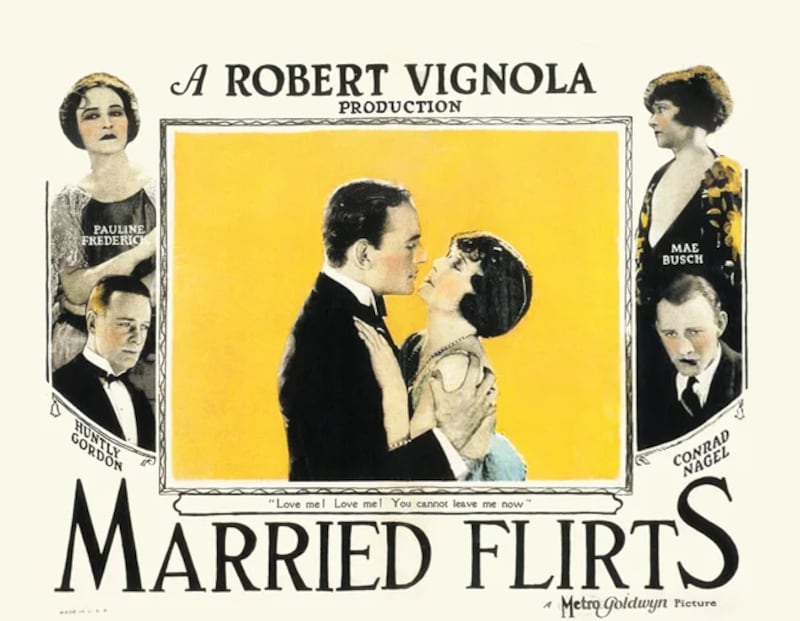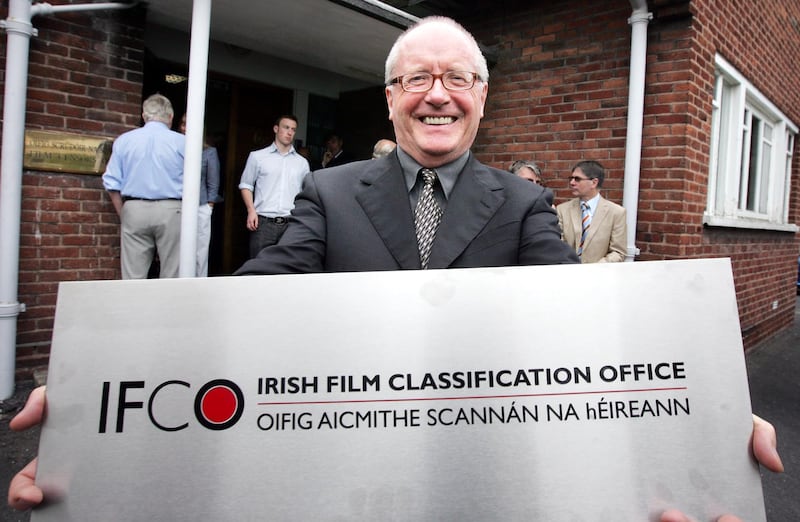The first time people paid into the movies was in Paris in 1895 when the Lumière brothers screened their 46-second film of workers leaving the Lumière factory. The following year the moving pictures – “the world’s most scientific invention”, as the Freeman’s Journal called film – came to Dublin, thanks to a music-hall impresario named Dan Lowrey. It was an immediate success.
[ Read the complete Century: 1923 Birth of a Nation seriesOpens in new window ]
The music hall was the home of popular entertainment, staging variety shows with acts such as The Eight Lancashire Lads, The Smartest Combination of Singers and Dancers Extant and, my personal favourite, Dronza – The Marvellous Mechanical Talking Head. Music halls started adding short films to the bill for these variety shows. Performers such as Charlie Chaplin would go on to become world-famous movie stars.
Soon there were dedicated picture houses. By 1925 The Irish Times could report that “every Irish village has a picture house today which offers a couple of hours of excitement all year round for a few pence to every schoolchild”, and in Britain there were 30 million visits per week. In less than 20 years cinema had become the primary entertainment for the majority of Irish people.
A ‘mad rush of pleasure’
Just like today with our “new” technologies of social media and video games, there were fears about the effects of film on people’s mental health and the medium’s potential political impact. The government, doctors and the Catholic Church were wary of it and thought it would be damaging. A Catholic preacher of the time, Rev Gilmartin, believed that cinema owners were “blinded by avarice, holding out inducements to their clients… fully aware of the melancholy consequences resulting from films”. This “mad rush of pleasure” would end if we could turn away from foreign films and foreign dance and “return to a holy and Catholic Ireland – an Ireland of brave manly boys, an Ireland of pure modest girls”.
RM Block

A doctor in England wrote that “the darkness and quietness, the company all intent on the same object and the stimulation of one sense all tend to produce a hypnotic state among picturegoers” – a sentiment echoed in many an article today about the dangers of TikTok. He thought that “intense films may potentially affect the character of the observer”. Because he was English, he thought it “desirable that films expressing British sentiments should be shown rather than those expressing the sentiments of other countries”. The IRA seem to have had similar thoughts, but with an Irish perspective, and went further, seizing “British propagandist films” such as The Prince of Wales’ Tour from cinemas in Dublin and bombing The Masterpiece cinema in 1925.
We used to be afraid of the Anglicisation of Ireland, but I think… we have as much to fear from the Los Angelisation of Ireland”.
— James Montgomery, the first Irish film censor
A danger to public morality
All of this concern meant that one of the first laws passed in Ireland’s new state, in July 1923, would relate to film censorship, giving the government the power to regulate all films and ban or cut those it deemed a danger to public morality. This legislation followed close upon the foundational Constitution of the Irish Free State and the Enforcement of Law Act: the fight for the hearts and minds of the Irish people was seen as just as important as the establishment of law and order. As the first Irish film censor, James Montgomery, put it: “We used to be afraid of the anglicisation of Ireland, but I think… we have as much to fear from the Los Angelisation of Ireland.”
Irish Destiny
Irish Destiny was the first movie made about “the troubles”. Set during the War of Independence and closing with some real footage of people celebrating wildly in the streets of Dublin when the 1921 Truce was called, it was screened in 1926. It focuses on one family caught in the fight for freedom. Denis O’Hara, the son, becomes involved with the IRA. He abandons his love, Moira, to get back to the fight. He leaves her to the mercies of the villain of the piece, who is that most un-Irish of things – an informer. It is a silent movie, so the dialogue takes the form of intertitles (like subtitles, but full screen). As one of those intertitles says, “Ireland is greater than a wife.”
The film paints a picture of Dublin at the time and is worth watching for a thrilling scene of Denis riding a motorbike through the streets from St Stephen’s Green up to Parnell Square, weaving through the trams and crowds. It was banned in Britain until a heavily edited version was released under the new name, An Irish Mother. The Irish censors had no problem with the politics but cut some of the romantic scenes.
‘Cut’
The 1923 law says that if the censor thinks that part of the film is unfit for public exhibition the film-maker has the option to “separate such part from the picture and surrender it to the Official Censor”, so that the rest of the film can be shown.
Because the film was physical, on celluloid, the censor could actually take the one and only copy of the film, carefully cut out the parts that he didn’t want shown and keep them separate. (This is where the term “cut” comes from in film-making, where frames were physically cut out and the remainder stuck back together.)
In 2008 the law was updated and the Film Censor became the Director of Irish Film Classification, ending the banning of films.
Ruth Hegarty is managing editor of the Royal Irish Academy

In the classroom:
Not many films were made about the Irish Civil War until relatively recently. Why do you think that is?
Censorship: in numbers
100
The average number of films banned yearly by Ireland’s first film censor, James Montgomery.
1,906
The number of films banned in Ireland between 1924 and 1940
177
The number of films banned in Britain over the same period





















